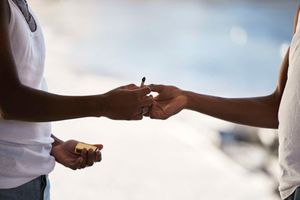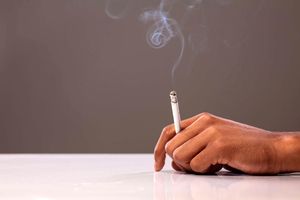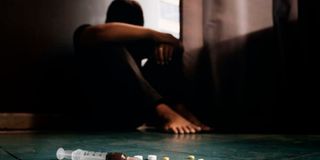
New data reveal that adolescents and young adults account for more than half of all drug users.
As a young man tosses back his third drink at a local pub in under an hour, he represents just one face of Kenya's growing substance abuse crisis.
Across universities, neighbourhoods, and rural communities, hundreds of thousands of youth are silently battling addiction while the government scrambles to respond.
Alarming new data reveal that adolescents and young adults aged 15-35 years now account for more than half of all drug users in the country, according to Public and Professional Health Standards Principal Secretary (PS) Mary Muthoni.
The latest government statistics collected between 2022-2025 by the Ministry of Health (MoH) paint a troubling picture: one in every 11 youths aged 15-24 years—approximately 632,846 individuals—is currently using at least one drug or substance of abuse.
The crisis deepens in the 25-35 age group, where over 1.5 million Kenyans are affected.
"One in every 20 youths aged 15-24 years (367,608) were currently using alcohol, one in every 31 youths aged 15-24 years (230,130) were currently using tobacco, one in every 28 youths aged 15-24 years (259,954) were currently using khat, one in every 37 youths aged 15-24 years (193,430) were currently using cannabis," detailed the MoH report.
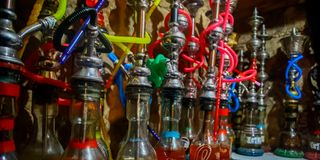
Shisha bongs confiscated during a crackdown by the National Campaign Against Alcohol and Drug Abuse in Kilimani, Nairobi on December 22, 2023.
The report further revealed that one in every 1,000 youths aged 15-24 years (8,328) were currently using prescription drugs while one in every 26 youths aged 15-24 years (267,454) use multiple drugs.
The problem isn't limited to younger teens. "One in every five youths aged 25-35 years (1,504,377) were currently using at least one drug or substance of abuse, one in every seven youths aged 25-35 years (1,137,288) were currently using alcohol, one in every 17 youths aged 25-35 years (488,845) were currently using tobacco," states the report.
The study also found that one in every 21 youths aged 25-35 years (388,735) use khat, one in every 48 youths aged 25-35 years (174,142) consume cannabis, one in every 500 youths aged 25-35 years (19,112) use prescription drugs while one in every 16 youths aged 25-35 years (494,218) use multiple drugs.
Regional hotspots
The government has identified 10 counties with the highest drug and substance abuse prevalence: Garissa, Kakamega, Kericho, Kisumu, Laikipia, Machakos, Meru, Mombasa, Nakuru, and Uasin Gishu.
Regional patterns have emerged in substance preferences. Western, Coast, and Central regions lead in alcohol abuse with a national prevalence of 11.8 per cent (3,199,119 individuals). Central, Coast, and Eastern regions top tobacco use at 8 per cent (2,305,929). Eastern, North Eastern, and Nairobi lead in khat usage at 3.6 per cent (964,737), while Nairobi, Nyanza, and Coast rank highest for cannabis use at 1.9 per cent (518,807).
Breaking down the data on alcohol addiction, youths aged 15-24 from Nairobi, Central, and Eastern regions lead with a prevalence of 5.8 per cent. The national prevalence for individuals aged 15-65 stands at 9.7 per cent (2,613,735).
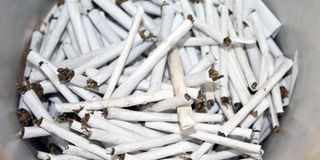
Rolls of bhang.
For tobacco addiction, youths aged 15-24 from Nairobi, Central, and Eastern lead with a prevalence of 1.9 per cent, while the national prevalence for ages 15-65 is 6.8 per cent (1,846,868).
Khat addiction shows youths aged 15-24 from North Eastern, Eastern, and Nairobi regions leading with a prevalence of 2.6 per cent. The national prevalence for ages 15-65 matches this figure at 2.6 per cent (700,384).
Cannabis addiction statistics reveal youths aged 15-24 from Nyanza, Nairobi, and Central leading with a prevalence of 2 per cent, while the national prevalence for ages 15-65 stands at 1.6 per cent (431,640).
The substances and sources
Speaking to Nation in an exclusive interview, PS Muthoni expressed concern about the most commonly abused substances.
"Drugs are obtained from local markets, informal settlements, and even neighbouring countries. Peer pressure, unemployment, and easy access to drugs contribute to the rising numbers of users," she told Nation.
The most prevalently abused substances include alcohol—especially illicit brews and counterfeit spirits—bhang (cannabis), miraa (khat), tobacco, prescription medications such as opioids and sedatives, and in some urban centres, hard drugs like heroin and cocaine.
Government response
"In recognition of the urgency and magnitude of this challenge, the Ministry of Health, through the State Department for Public Health and Professional Standards, initiated a comprehensive nationwide public awareness and stakeholder sensitization campaign between November 2024 and February 2025. This campaign adopted a cluster-based implementation model and was rolled out across all 47 counties," PS Muthoni explained.
The national and county governments, in collaboration with the National Authority for the Campaign Against Alcohol and Drug Abuse (Nacada), the Kenya Police, and local organizations, have periodically launched crackdowns on illicit brews and illegal drug trade. Additionally, awareness campaigns and rehabilitation programs have been initiated.
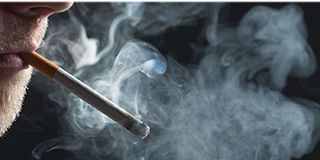
Cigarette smoking. Photo/File
The Health ministry has prioritised training health workers to support early detection, clinical management, and appropriate referral of individuals suffering from substance use disorders. This effort is informed by growing clinical evidence linking substance abuse with mental health conditions such as depression, anxiety, and psychosis.
Challenges and solutions
Despite these efforts, PS Muthoni acknowledged several challenges: "Inadequate numbers of trained personnel, insufficient funding and logistical capacity for substance abuse prevention and treatment programs, infrastructure gaps in rural and high-burden areas and the unchecked proliferation of unlicensed pharmaceutical outlets, notably in Garissa and surrounding regions, selling harmful and banned substances."
To strengthen treatment and rehabilitation services, the government has identified ten high-prevalence counties for establishing government-supported rehabilitation and cessation centres.
"The centres will provide affordable detoxification and rehabilitation services, counselling and psychosocial support as well as community-based reintegration and aftercare programs," the PS said.
Cost of recovery
PS Muthoni outlined the costs associated with treatment: "When it comes to substance use disorder treatment, detoxification services cost Sh14,000 per treatment cycle and this covers medical detoxification under professional supervision."
"For rehabilitation services they cost Sh125,000 per program for a minimum of 45 days with a partial reimbursement of Sh1,000 per day for up to 10 days for early discharge and comes with a comprehensive rehabilitation including psychosocial therapy, counselling, and reintegration support," she added.
For mental health services in government facilities, outpatient services cost Sh1,200 per visit with an annual limit of seven visits per beneficiary. These services include screening, diagnosis, counselling, and medication management.
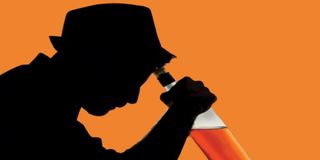
One in every 20 youths aged 15-24 years currently use alcohol.
Inpatient services vary by hospital level: Level 4 hospitals charge Sh3,500, Level 5 hospitals Sh4,000, and Level 6 hospitals Sh5,000 for up to 35 days per admission. The PS noted that these amounts cover acute psychiatric care and stabilization of behavioural disorders.
The long-term impact
The health ministry warns that the mental health consequences of drug and substance abuse are deeply troubling. Early initiation into drug use is strongly associated with the onset of lifelong mental health disorders, family disruption, school dropout, and in some cases, suicide.
PS Muthoni cautioned that if left unaddressed, this trajectory undermines not only individual potential but the nation's social and economic development as well.

